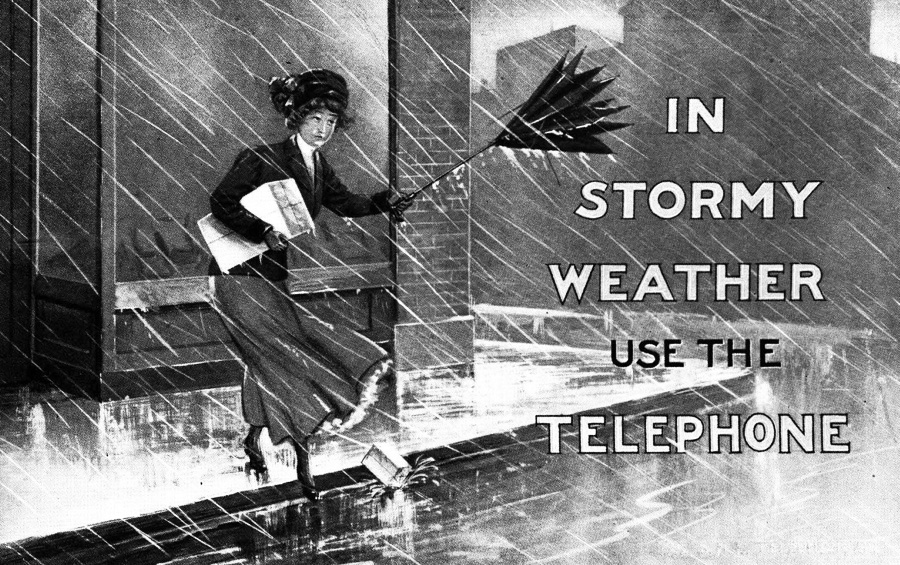By Dan Shine
Voice Columnist
New Haven: Home of the First Telephone Exchange in the World

New Haven’s East Creek is no longer in existence. However for generations it served its settlers and inhabitants faithfully: First it was employed by the Quinnipiac Indians who used it for catching fish and shellfish. Later it served the Puritan followers of John Davenport and Theophilus Eaton, who arrived here in 1638 and stayed for 30 years before moving on to found Newark, New Jersey. And it would serve the many newcomers who followed them. Extending from New Haven Harbor, East Creek ran alongside the southern end of State Street. In those bygone days, oceangoing vessels could proceed upriver as far as the intersection of State and Chapel streets.
Eventually, East Creek was drained and piped away, and the riverbed was used to support the railroad tracks extending from New Haven north to Hartford and east to New London and Providence. And the land surrounding the creek eventually evolved from farming community to carriage manufacturing community, as well as bedroom community for New Haven’s newest crop of immigrants. On nearby Wooster Street, Eli Whitney invented the cotton gin in 1793, just a stone’s throw from where Frank Pepe would introduce New Haveners to pizza in 1925.
In its time, East Creek witnessed numerous transitions and innovations, as clever New Haveners moved the world forward with their numerous inventions.
We today take the telephone for granted, as we have for our whole lives; but in 1887, the U.S. Mail was the common medium of communication, and telegraphic service was a faster but much more expensive alternative.
By that year, East Creek was just a memory. And then one evening in 1887, a public demonstration took place in an opera house near the corner of Chapel and Olive Streets. It showed a fascinated audience the power of Alexander Graham Bell’s telephone. This demonstration captured the public imagination and sowed the seeds for what would become a revolutionary device for personal communication. Prior to this demonstration telephones, invented by Bell in 1875, were owned by private persons or businesses who leased telephones in pairs to connect, for example, one’s home with a business. In these cases, it was necessary to arrange for telegraph contractors to string privately-owned wires between the two locations.
Back to our story: one of those in the audience at the opera house that night was George W. Coy. He was employed by the Franklin Telegraph Company and associated with the Atlantic & Pacific Telegraph Company, located a block away at the corner of State and Chapel Streets. Coy reasoned that if these telephone devices were to be installed here and there, in homes and businesses, and if a method could be found for connecting any one telephone with any other, the problem of intercommunication would be solved.
What Coy did next made the idea a reality: He created a rudimentary telephone switchboard that allowed a central office to connect multiple persons, thus allowing each subscriber the advantage of having to buy only one phone in order to connect to a potentially infinite number of other subscribers. He built the switchboard with carriage bolts, handles from teapot lids, wire, and other spare parts. The 21 original subscribers to the exchange each paid $1.50 per month. All calls were made through the central office, where a telephone operator (Coy, at first) connected the person initiating the call to the party that he or she wished to reach. Direct dialing and telephone numbers would not become common until the 1920s; by that time, telephone communication had become familiar and commonplace.
The first telephone directory was printed in 1878, and listed fifty subscribers in this new and exciting venture. The first telephone booth was installed the next year, at about the same time as the first female operator was hired. This occupation would be reserved for “women only” for decades. The first crank calls took place in Rhode Island in 1884, and as the story goes, were a prank played upon undertakers. But we digress…
Thus was born the New Haven District Telephone company; it would operate from the Boardman Building along what was once the bank of East Creek, just across the creek bed from the opera house where a revolutionary idea had once taken shape. The new company would ultimately become part of the Bell System, which linked all of the local telephone companies into a nationwide network. The Bell System would dominate telephone communication for more than 100 years, until it was broken up by court order in 1984.